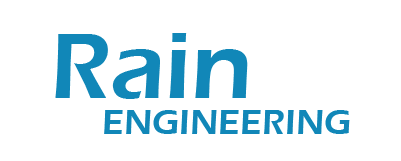The manufacturing industry is a cornerstone of global economies, playing a crucial role in producing goods that impact virtually every aspect of our daily lives.
From the cars we drive to the electronics we use and the medicines we rely on, manufacturing shapes modern society.
If you’re considering entering this dynamic field—whether as an entrepreneur starting your own manufacturing venture or as a professional looking to build a career—here’s a comprehensive guide to help you navigate its complexities and seize its many opportunities.
Firstly, it’s important for you to understand that the manufacturing industry is incredibly diverse, encompassing sectors as varied as electronics, automotive, pharmaceuticals, food and beverage, and more.
Each of these sectors operates under its own unique set of challenges and opportunities, driven by technological advancements, market demands, and regulatory requirements.
Therefore, choosing the right niche within manufacturing requires careful consideration of your interests, skills, and the current market landscape.
Now, in recent years, the manufacturing industry has undergone a significant transformation with the emergence of Industry 4.0.
This era is marked by the integration of automation, robotics, IoT (Internet of Things), AI (Artificial Intelligence), and digitalization across production processes.
These technologies are not just trends but fundamental drivers of efficiency, cost reduction, and product quality improvement.
Embracing such a culture of innovation, continuous improvement, and proactive adaptation to technological advancements is essential for maintaining competitiveness and driving sustainable growth in a rapidly evolving manufacturing landscape.
… Because, perhaps above all else, today’s manufacturing industry rewards entrepreneurial spirit, creativity, and a proactive approach to problem-solving.
Therefore, identifying market gaps, seizing opportunities for innovation, and adapting to changing consumer preferences are great pathways to success in this dynamic and competitive industry.
And embracing a mindset of agility, resilience, and openness to exploring new ideas and technologies is key to navigating challenges and capitalizing on the abundant opportunities that manufacturing offers.
Globalization has interconnected supply chains across continents, presenting both opportunities and challenges for manufacturers.
Efficiently managing logistics, understanding international trade dynamics, and ensuring supply chain resilience are critical for maintaining operational efficiency and mitigating risks.
Recent global disruptions, such as the COVID-19 pandemic, have only underscored the importance of agile supply chain management practices that can quickly adapt to unforeseen circumstances and disruptions.
Manufacturers must innovate to meet these evolving demands, whether through adopting eco-friendly production practices, offering personalized products, or implementing efficient supply chain strategies.
However, no matter what the current yet fleeting hurdle, compliance with regulatory standards remains a foundational aspect of manufacturing operations.
You see, in addition to any global disruptions that may be going on at the moment, successful manufacturers must navigate a complex landscape of safety regulations, environmental standards, labor laws, and product certifications to ensure operational legality and build trust with consumers and stakeholders alike.
Therefore, staying abreast of regulatory changes and investing in robust compliance measures are essential for long-term sustainability and reputation management.
The modern manufacturing workforce requires a diverse set of skills beyond traditional manufacturing roles.
From engineering and automation to data analytics, software programming, and project management, technical expertise is essential for leveraging new technologies and driving innovation.
Investing in continuous training and development programs not only enhances employee capabilities but also ensures the workforce remains adaptable and capable of meeting evolving industry demands.
Starting and scaling a manufacturing business requires substantial financial investment in equipment, facilities, technology, and human resources.
Effective financial management practices, including budgeting, cash flow optimization, cost control through lean manufacturing principles, and strategic risk management, are critical for achieving profitability and sustaining growth.
Securing adequate financing and contingency planning for unforeseen challenges are integral parts of business planning in manufacturing.
Collaboration with suppliers, distributors, and industry peers is instrumental in fostering innovation and exploring new market opportunities.
Participation in industry networks, trade associations, and professional forums facilitates knowledge exchange, partnerships, and access to industry insights.
Embracing a culture of innovation, continuous improvement, and proactive adaptation to technological advancements are essential for maintaining competitiveness and driving sustainable growth in a rapidly evolving manufacturing landscape.
Entering the manufacturing industry is embarking on a journey filled with opportunities for innovation, growth, and impact.
It’s a dynamic sector that not only shapes economies but also drives technological advancements and responds to evolving consumer needs.
By embracing these principles and practices, you can position yourself or your business at the forefront of innovation and efficiency within the manufacturing industry.
Whether you’re producing consumer electronics, pharmaceuticals, automotive parts, or any other product, the potential for growth and contribution to society through manufacturing is immense.
So, as you embark on this journey, remember that success in manufacturing is not just about producing goods—it’s about creating value, driving progress, and making a lasting impact on the world around us.
P.S. Upgrading your GE Proficy software doesn’t have to be complicated or time-consuming.
At Rain Engineering, we’ve developed a proven 3-step process to ensure a seamless upgrade that keeps your operations running smoothly and securely.
Step 1: Schedule Your Shop Floor Assessment
We start by thoroughly assessing your current system setup and understanding your specific needs. During this assessment, our experts will:
This assessment is the foundation of a tailored upgrade plan designed to maximize your system’s potential.
Step 2: Receive Your Custom Plan
Based on the assessment, we’ll develop a custom plan for upgrading your software. Your plan will include:
Our team will work closely with you to ensure that the plan aligns with your operational goals and business objectives.
Step 3: Implement and Optimize
Once you approve the plan, we’ll begin the upgrade. Our experienced engineers will:
We don’t just leave you with an upgraded system—we partner with you to ensure it continues to operate at its best.
Ready to Get Started?
Don’t wait until outdated software becomes a liability.
Schedule your needs assessment phone call today and take the first step toward a more secure and efficient system.
